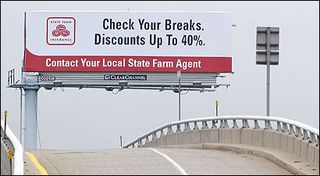Earlier this week, I encouraged you to develop a believable recruiting message and then stick to it—even under the pressure of competitors who are touting discounts and shortcuts. Recruiting guru, Peter Weddle, weighed in on this topic a couple of months ago. I think his perspective is worth sharing:
“Consistency involves the creation of a single message that is used in every candidate channel. It could be your employment brand or a more aggressive 'sales pitch' to ramp up your hiring for a new product launch or facility opening. Whatever it is, the central idea you convey and even the choice of words you use must be the same in every single channel.
Such consistency is difficult to achieve in any of a number of different situations. But despite those challenges, it is critical that your organization achieve and maintain this goal. Differing messages or different expressions of the same message across multiple channels will confuse candidates and diminish your ability to influence their behavior. In the past, we told ourselves that we only got one chance to make a good first impression; today, we have hundreds of chances to make one good impression, and it's just as important that we do.”
Any idea what he is referring to in that last sentence? It is an acknowledgement that because people are exposed to so many different media channels, there is a chance that a person may see your messages from many different angles. When there are inconsistencies, your candidates become confused about who you really are.
What makes the State Farm billboard I referenced yesterday so damaging is that I viewed a commercial in my hotel room just ten minutes earlier featuring a man with a deep voice reassuring me that “like a good neighbor” State Farm would be there for me if I got into trouble. I walk outside, and the State Farm rep is shouting “Discount!” When the messages collide like this, something doesn’t feel right. I don’t believe either message.
Likewise, your candidates won’t believe you if you’re not consistent in your messaging. How do you keep this sort of mixed messaging from occuring in your organization? You create what media experts call linkage.
"The propensity of candidates to move among [media] channels presents us with a choice. We can accept that such movement exists and simply react to it, or we can endeavor to exert some control over that movement so that it better serves our purpose. Linkage is the way you accomplish the latter goal. You create 'stepping stones' among the various channels to make it easy for candidates to follow a path you have laid out.
In effect, no matter where a candidate goes, they are led back to the one place online where you have the best opportunity to sell them on your organization. That's the purpose of linkage-to amplify the impact of your message by eliminating or at least lowering the randomness of how candidates will see it. We can't, of course, stop them from moving around, but we can try and move them to where we can make our best impression on them, and it's important that we do that, as well.
A consistent and well linked pattern of messages enables you to create a clear and more impactful portrait of your organization. Its repetition across multiple channels ensures that everyone sees the organization in the same way and sees it everywhere they look."
Do the recruiting messages you’re presenting to the public have this kind of linkage? If not, you need to rethink your approach -- you're not getting the maximum benefit for your advertising, and the end result is a less powerful impact on potential candidates...
Also, remember that the recruiting process doesn’t end with marketing - once a candidate agrees to an interview, the hiring manager should be supporting and reiterating the marketing message to which the candidate responded. The most successful recruiting companies create a link from beginning to end.
Editor's Note: This article was written by Ben Hess. Ben is the Founding Partner and Managing Director of Tidemark, Inc. and a regular contributor to WorkPuzzle. Comments or questions are welcome. If you're an email subscriber, reply to this WorkPuzzle email. If you read the blog directly from the web, you can click the "comments" link below.




Comments